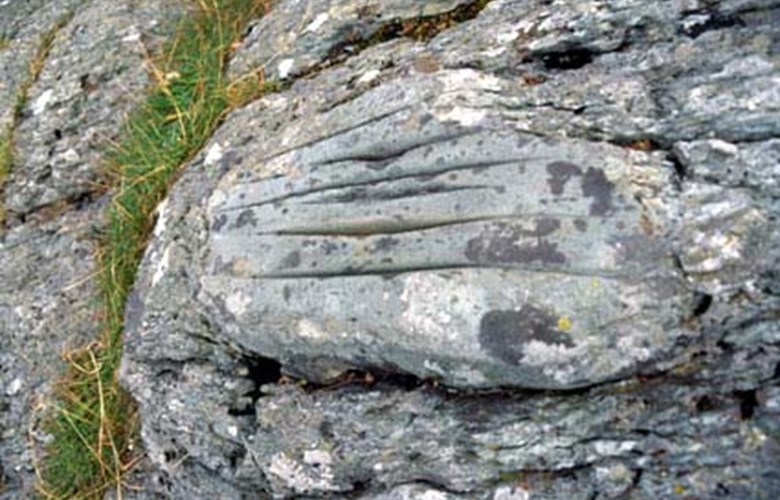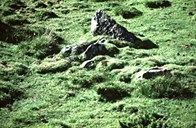Listed caves and stone tombs
On the basis of earlier registrations by Per Fett, registrations were once more undertaken in 1979 of permanent culture monuments in Solund. To some extent, new locations were searched for. The work was led by Arthur Fasteland. 23 locations were registered, in addition to movables such as axes and pumice stones.
All permanent culture monuments are automatically protected by law, also unregistered monuments which might otherwise be found. Except for the Stone Age location Grønehellaren, the permanent monuments are mostly caves and stone tombs, and at Utvær a church site and whetstones. Only Grønehellaren has been examined closely.
Shells, pumice, and pieces of coal
The topography of Solund has a number of caves and rock shelters. They gave the people fair protection against rain, snow, and wind, and they could stay there for shorter or longer periods. In addition, there was plenty of game and fish, so such places could be used for thousands of years. Sample tests in several places show traces of early settlements, perhaps by the first humans who moved along the glacier edge.
Under the property of Furevik such a cave is registered. It is situated 10-15 metres above sea level and close to a small river rich in fish. Samples showed bones, shells, pumice, and pieces of coal. The soil was dark and carbonaceous.
A short way to the food chamber
On the islands of Ospa there are no less than three caves which must have served as living quarters. In all of them were registered carbonaceous layers of earth, shells, remnants of bone and pumice. From here there was a short way to a rich food chamber in the sea. Two of these are better known: at Ospekirkja some Norwegian radio operators stayed for some time during the last war, and in Værøystaua they found and rescued an exhausted youngster who had crawled up there after a shipwreck.
At Hersvik the cave called Griseparken (pig park) is situated. Here a 25-centimetre thick layer of bones and shells was found.
Stone Age location at Setrevågen
The curator Egil Bakka of the University of Bergen registered monuments in Solund in 1952. He had a particularly good eye for how such areas must have looked at the time when the sea level was higher. He took sample tests and indicated traces of living quarters at Grønehellaren, Venehellaren, at Hersvik, Lendig, and in some other places. Under the farm of Kolgrov and at Håsvågen there are also caves with traces of early settlements. The Stone Age locality at Setrevågen was found by Tore Bjørgo in 1973, during an inspection along the road project Ytrøygrend - Hjønnevåg, and at Lundøy and Hardbakke remnants of pumice were discovered during the planning of an industrial site and a road there.
Overgrown by moss
Stone graves have been found under the farms of Kolgrov, Indrøy, Steinsund, and Stokkevåg, nine in all. The graves were originally covered by stone. Most of them are now partly overgrown by moss and heather. The sizes vary, on average they are 2-3 by 1 meters.
At Indrøy there are three graves several hundred metres apart. At Bjørnefjorden, Steinsund there is a collection of three, only a few metres apart. Here are also 4-5 more unconfirmed graves.
Of other culture monuments which deserve mention are pumice at Tungodden (with grooves) and Hågøy, and a stone axe found at Steindalen.



